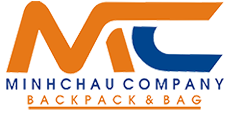In today’s competitive business landscape, customer engagement is crucial to building long-term relationships and driving business growth. Companies must focus on delivering personalized and seamless experiences to their customers, and Customer Relationship Management (CRM) systems have become essential tools in achieving this. However, with customer expectations constantly evolving, businesses are now turning to CRM automation to maximize engagement and improve efficiency.
CRM automation combines the power of technology with customer-centric strategies to streamline interactions, enhance personalization, and deliver consistent value to customers. This article explores how CRM automation helps businesses boost customer engagement, the key features involved, and best practices for implementation.
1. Understanding CRM Automation
CRM automation involves using automated tools and workflows to manage various customer-related tasks, interactions, and processes. These tasks include email marketing, lead nurturing, sales follow-ups, customer support, and data analysis. By automating routine functions, CRM systems free up valuable time for sales, marketing, and customer service teams to focus on building stronger customer relationships.
2. Benefits of CRM Automation in Customer Engagement
CRM automation offers several benefits that directly impact customer engagement. Below are some of the most significant ways automation enhances customer interactions:
a. Personalized Communication at Scale
Personalization is key to engaging customers effectively. With CRM automation, businesses can tailor communications based on customer preferences, behaviors, and purchase history. For example, automated email campaigns can send personalized messages based on a customer’s previous interactions with the brand, such as product recommendations or exclusive offers.
By analyzing customer data stored in the CRM system, businesses can also create segmented customer lists and target specific groups with relevant content. This level of personalization fosters deeper connections and improves customer loyalty.
b. Timely and Consistent Engagement
Engaging customers at the right time is critical for maintaining a strong relationship. CRM automation allows businesses to schedule and send automated messages or reminders to customers based on their behavior or lifecycle stage. For instance, sending an automated follow-up email after a customer makes a purchase or triggering a re-engagement message when a customer hasn’t interacted with the brand in a while.
This timely outreach ensures that customers feel valued and appreciated, which helps build trust and loyalty over time.
c. Seamless Omnichannel Experience
Modern customers interact with brands across various channels, including email, social media, websites, and chatbots. CRM automation ensures that all these interactions are tracked and managed in one central system. It helps businesses maintain a consistent experience across channels, regardless of where the customer is engaging.
For example, a customer who reaches out via email can receive the same level of service and attention when they contact the business through social media or live chat. This seamless experience makes customers feel connected and valued at every touchpoint.
d. Efficient Lead Nurturing
CRM automation streamlines lead nurturing by automatically guiding prospects through the sales funnel based on their actions and engagement levels. For instance, a prospect who downloads a whitepaper from the company’s website may trigger a series of automated follow-up emails with relevant content designed to move them closer to making a purchase.
This automation ensures that leads are consistently engaged without requiring manual intervention, increasing the likelihood of conversion.
e. Enhanced Customer Support
CRM automation can also enhance customer support by providing automated responses to common inquiries or routing customer queries to the right department or agent. Chatbots, for example, can be integrated into the CRM system to provide instant answers to frequently asked questions.
Additionally, CRM systems can trigger alerts for customer service teams when a high-priority issue arises, ensuring timely responses and preventing potential dissatisfaction. These automated processes improve the overall customer experience by resolving issues quickly and efficiently.
3. Key CRM Automation Features for Maximizing Engagement
To maximize customer engagement, businesses should focus on several key CRM automation features:
- Automated Workflows: Predefined workflows can automatically assign tasks to sales or support teams, trigger follow-ups, or send emails based on customer actions.
- Lead Scoring: This feature assigns scores to leads based on their interactions with the brand, helping prioritize high-value prospects for personalized engagement.
- Email Marketing Automation: Automated email campaigns can be tailored to specific customer segments or behaviors, providing personalized content at the right time.
- Customer Segmentation: CRM automation tools allow businesses to segment customers based on demographics, purchasing behavior, or engagement levels for more targeted communication.
- Analytics and Reporting: Real-time data analytics help track customer engagement and measure the effectiveness of campaigns, providing insights for future improvements.
4. Best Practices for Implementing CRM Automation
To get the most out of CRM automation, businesses should follow these best practices:
a. Start with Clear Objectives
Before implementing CRM automation, define clear objectives for what you want to achieve. Whether it’s improving customer retention, increasing sales, or enhancing support, having specific goals will guide the automation strategy.
b. Personalize with Data
Leverage the data stored in your CRM system to deliver personalized experiences. Use customer behavior, preferences, and past interactions to create relevant and meaningful communications.
c. Regularly Monitor and Optimize
Regularly track the performance of automated campaigns and workflows. Analyze engagement metrics such as open rates, click-through rates, and conversion rates to identify areas for improvement. Continuously optimizing automation strategies will ensure ongoing success.
d. Integrate Across Channels
Ensure your CRM automation integrates seamlessly with all customer engagement channels. Whether through email, social media, or chatbots, the automation should work together to provide a cohesive experience.
Conclusion
CRM automation is a powerful tool for maximizing customer engagement by enabling personalized, timely, and efficient interactions at scale. By automating routine tasks and leveraging data-driven insights, businesses can deliver consistent value to their customers while freeing up resources for strategic initiatives. As customer expectations continue to evolve, CRM automation will remain a crucial component of any successful engagement strategy






